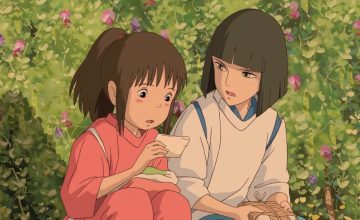Even if I have a love-hate relationship with the label, I’d have to admit that somehow, I consider myself chronically online. This personal admission, though, can very much coexist with my frequent longing for the almost-no-social-media era.
Remember how our televisions used to rule our viewing habits? Our concept of “waiting” didn’t feel like waiting at all. Even the few minutes before our favorite TV show’s time slot—which was some sort of countdown—became a thrilling experience itself. The only way for us to discover the next interesting thing on screen was just to keep watching, no matter if it’s a commercial or an episode preview we’ll randomly catch.
When I was a kid, among the coolest discoveries I had while passively facing the TV was horoscope readings. While I knew those messages were crafted for the general audience, witnessing local astrologers unpack their messages felt like I was in a personal conversation with them, with confidential prophecies being passed down to me. Soon enough, my interest in astrology grew, also thanks to teen magazines’ sections dedicated to horoscopes. Looking for “Scorpio” soon became a reflex—however, I did this in secret, knowing the impressions attached to astrology believers, especially in a conservative Catholic country.
Now as a (young) adult, I didn’t think I’d have some sort of deja vu in one of the most unlikely places: TikTok. As I was doom scrolling my way through another revenge bedtime procrastination session, I chanced upon—as how she describes herself—a pink-haired tarot card reader. “If you’re seeing this, this may be for you,” she said, which sounded so literal on my For You Page.
@theblessedbhie♬ original sound – theblessedbhie! ig: illuminaly
Raised Roman Catholic (with three priests in the family), Aly Dimaculangan—a.k.a. The Blessed Bhie—is a 23-year-old tarot practitioner and University of the Philippines Diliman student. After getting intrigued with the first video that resonated with me, her corner of the internet became one of my go-to spaces online, reminding me of the intimate energy that emanated from astrologers that graced my family’s old wonky TV screen, plus the fun curiosity fueled by horoscope columns in magazines that raised me. Most of all, this “eclectic witch” inspired me to express my penchant for astrology loudly.
A few months ago, Scout had an exclusive chat with Aly, where we talked about her beginnings in tarot, “bestie” presence online, and even gave us a mini desk tour. But if you’re like me who’s put “Learn Tarot Card Reading” in their 2023 bingo card, I tried asking her for advice, too.
For Aly, what are the top traits an aspiring reader should have?
View this post on Instagram
Have an open mind (and keep your boundaries)
Have you ever experienced a live tarot reading? Whether it’s IRL or via video call, you’d know what I mean when I say that a session can feel like cathartic venting. (Tarot can be a form of self-care, after all.) Well, no wonder—just like a friend, your tarot reader dedicates their headspace and energy for you.
“Tarot really is complex, and when you’re a reader, you’re opening yourself up to problems [or] the life situation of other people,” says Aly. Despite that, though, she advises aspiring readers to be firm with personal boundaries. “The tendency for tarot readers, especially if you’re starting out, is to, like, overgive. You have to keep an open mind, so you know your boundaries and you know what you’re getting into in terms of being able to realign and connect with your readers.”
“You have to be open in terms of receiving messages, and at the same time, learning from the people you read for. Because much like any other skill, it’s a never-ending practice and journey of learning.”
Aly also highlights that the process, at the end of the day, is a two-way street. “You have to be open in terms of receiving messages, and at the same time, learning from the people you read for. Because much like any other skill, it’s a never-ending practice and journey of learning.”
View this post on Instagram
Three words: Cleanse, protect, banish
In the first part of my Scout Backstage interview with Aly, I found out that part of her preparations is making sure her space is cleansed, like lighting incense or taking a bath. “Some people cleanse through the act of cleansing itself quite literally: Maligo (bathing).”
“They can also cleanse through smoke, crystals, and protecting [themselves]—you can conduct a ritual for that, meditate on that, and provide personal boundaries that the client knows about.” On top of these options, Aly suggests researching on what works for you best.
Next step? Banishing unwanted energy—which is arguably challenging. “One of the simplest ways to do it is to write your thoughts down, cross [them] out (or replace with ‘positive affirmations’ if you want a more ‘positive lens’), then you can end there. Like, pwede mong i-fold away from you (you can fold it away from you) and burn it. Then you offer and release it to the universe.”
“You don’t have to do it the way I described it,” she clarifies. “But you know, just learning your personal boundaries and your personal process helps a lot.”
View this post on Instagram
Be honest with your intentions
Starting your tarot journey can be quite overwhelming. With everything you have to learn and prepare, where do you start? But like with any new venture, the cliché saying remains true: Go back to your “Why.” What made you decide to do readings? Honesty with your intentions is an important trait for Aly.
“Are you mainly doing it for guidance? Are you doing it because you would want to earn? It’s nothing wrong because it’s still energy exchange. But there’s also a difference between wanting to genuinely help people [versus] seeing tarot as some sort of cash-grab.”
@theblessedbhie♬ original sound – theblessedbhie! ig: illuminaly
Go easy on yourself
Sure, there’s a lot to take in (like this article) and consider before getting your first deck of cards and going all the way. But here’s what Aly wants beginners to take note of right off the bat: “Don’t pressure yourself, make sure to align with fun. Because if you take yourself too seriously, then you’ll be trapped in a very fixed lens.”
“Don’t pressure yourself, make sure to align with fun. Because if you take yourself too seriously, then you’ll be trapped in a very fixed lens.”
She explains this further through a sample scenario: “‘Okay, ‘pag ito ‘yung nakita kong card, ito lang ibig sabihin ‘nun. ‘Pag Empress [card] ‘yung makita mo, buntis ka.’ Hindi naman tayo ganun (laughs). It kind of defeats the purpose of tarot being a guide.”
(‘Okay, if I see this certain card, this only means one thing. If you see an Empress card, that means you’re pregnant.’ It shouldn’t be like that.)
“Prioritize learning more about yourself through the practice,” she wraps up her advice.
View this post on Instagram
Somewhere in our conversation, I might have spotted a part of her own learning process. This was when I asked: “Being both a Roman Catholic and a tarot reader, how do these aspects influence each other? Do you find yourself in conflict because of these two?”
As someone who’s personally witnessed misconceptions with divination and debates regarding tarot and religion, I wanted to know Aly’s thoughts on the topic.
“Back when I didn’t really know much about tarot, that’s the most conflict I had with my spiritual practice, and at the same time, my own religion,” she confesses. “I didn’t know that they could coexist. I didn’t know that tarot in itself is a variety of spiritual practices—and you can’t really fixate on one specific intention for it.”
Aly says that in her practice as an eclectic witch, she uses the cards to gain insight from her guides—and this is where she mentions St. Uriel.
“St. Uriel, the archangel of truth, which is part of the Roman Catholic tradition as one of the archangels. So doon siya nago-overlap I guess, and that’s how I try to incorporate my spiritual practice and my given religion. So in line with that, I try to balance [them] by making sure that I still align myself with my spiritual morals and ethics.”
(That’s where they overlap I guess, and that’s how I try to incorporate my spiritual practice and my given religion.)
Above all of these, Aly advises to keep an open mind. “You can’t really change the perspective of someone especially if it’s related to religion since it’s a very sensitive and a very personal topic for a lot of people. But you can still strive to advocate for your own spiritual practice, and at the same time, understand that if it doesn’t really get to the specific person, or kahit na in-explain mo, you try to educate wala pa ring nangyari, it’s not necessarily your fault.”
(But you can still strive to advocate for your own spiritual practice, and at the same time, understand that if it doesn’t really get to the specific person, or even if you’ve already explained and tried to educate but still nothing changes, it’s not necessarily your fault.)
At the end of the day, if a practitioner struggles with the “blurry lines” between spiritual practice and a certain religion, she explains that aligning with one’s truth would be helpful. “It’s quite tricky to explain, but I hope that makes sense.”
Read more:
Ghost Month advice from the Instagram tarot readers + healers
Why we’re obsessed with astrology and the occult
Don’t worry, these 5 astrology apps won’t troll you
Screenshots from @theblessedbhie on TikTok
Art by Yel Sayo
























Comments